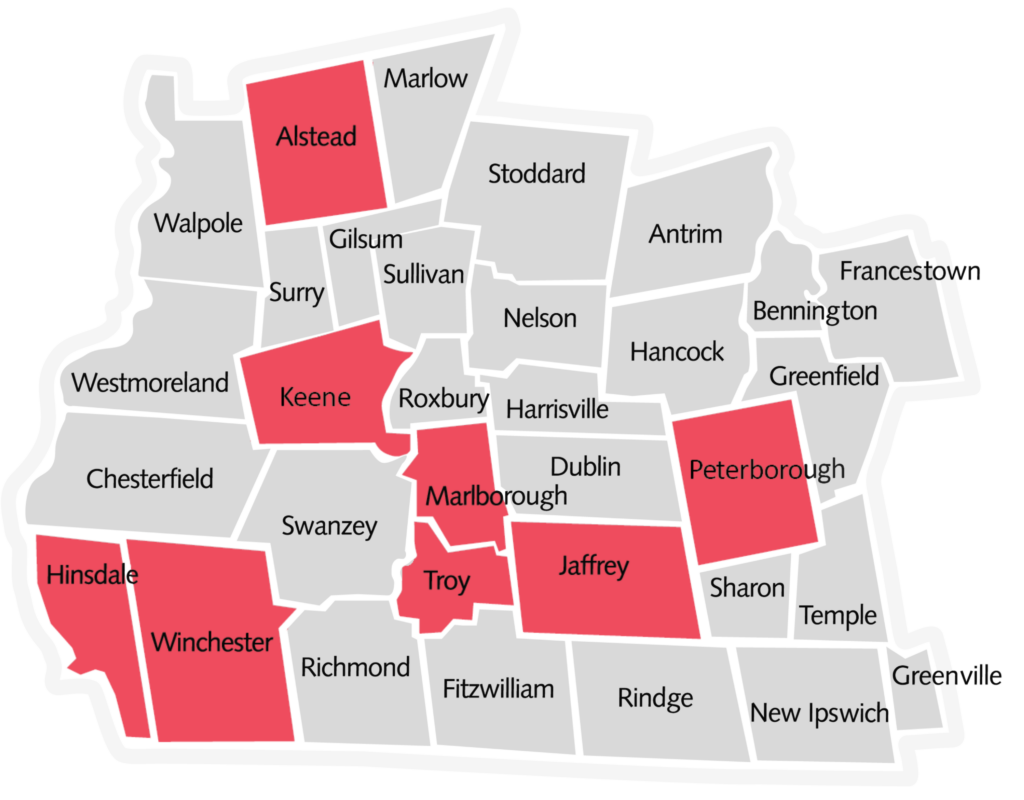
High-Impact Towns
High-impact /haɪˈɪm.pækt/ |adjective|: able to effect or influence someone or something in a powerful way; having a large or powerful effect:
When creating community-wide action plans, it is crucial to recognize that not all communities require and receive support equally. This realization led us to develop the Community Well-Being Impact Guide, and the “High-Impact Town” model. The purpose of this work was to enhance existing community initiatives across the region and to focus the efforts of the Healthy Monadnock Alliance Workgroups to create the most significant community impact. Through this new model, we feel our efforts and resources will be more equitably distributed throughout the region.
Identifying High-Impact Towns
When creating this model, we compiled data from multiple sources, including the New Hampshire Department of Health and Human Services data portal, local community surveys, and various place-based data sets. Data for each town was compared to regional data to identify differences, and an index score was calculated. Towns with the highest index scores, indicating the greatest potential to impact well-being, were designated as “High-Impact Towns.” The data used to determine these designations included:

- Information on populations of interest, such as adolescents, seniors, and racial/ethnic minority groups.
- Protective and risk factors include education, social support access, and local crime rates.
- Access to resources, such as employment opportunities, income levels, living conditions, and availability of vehicles.
The “High-Impact Town” designation was given to communities with the greatest need and the most opportunity to improve well-being at a community-wide level.
Integrating “High-Impact Towns” into Your Work
Whether your work is a long-standing community project or in the early stages of planning, utilizing the “High-Impact Town” model can enhance your efforts in the following ways:
- Identifying geographic areas to strengthen existing programs or services.
- Piloting new community-based programs or services.
- Prioritizing outreach to residents of specific towns to encourage participation in community-building initiatives.
- Hosting events and activities in these towns to ensure better access for community members.
- Supporting funding opportunities and proposals for place-based initiatives.